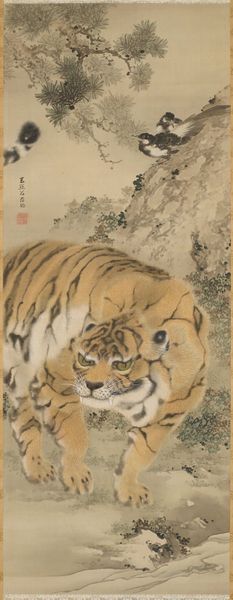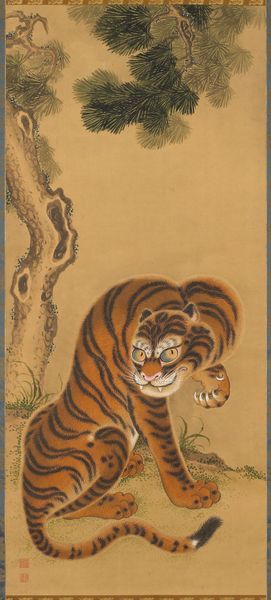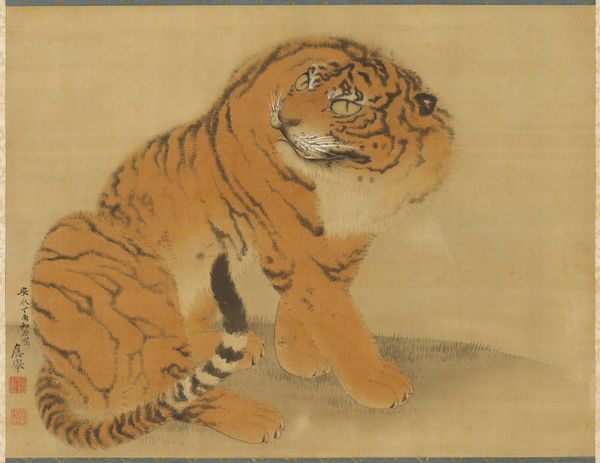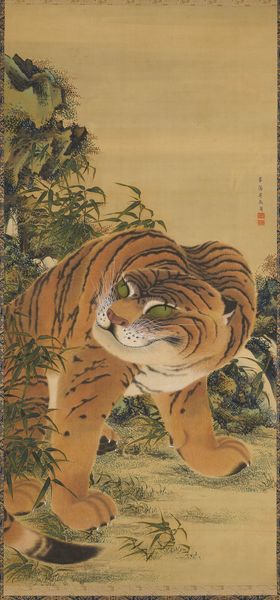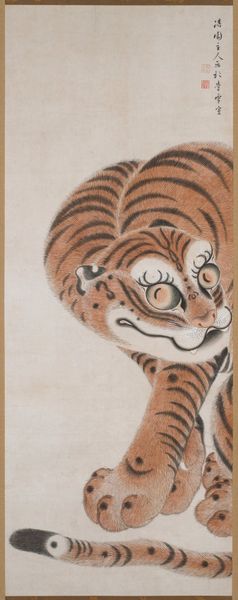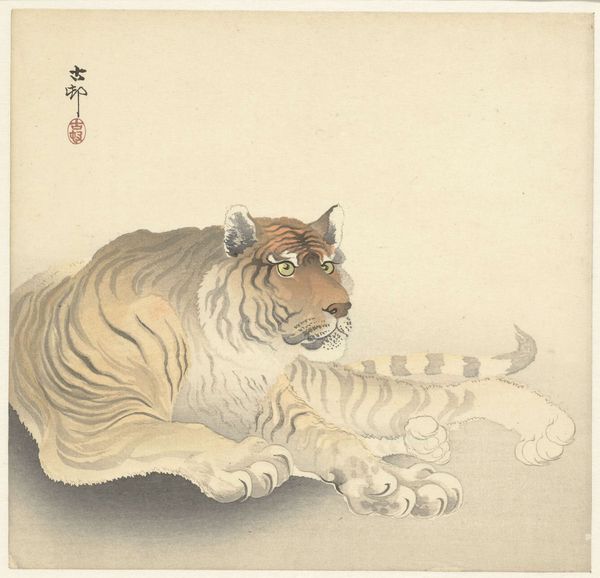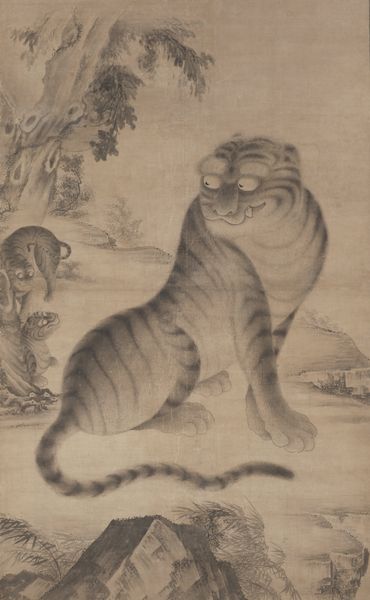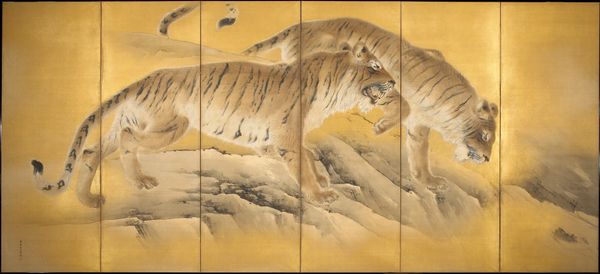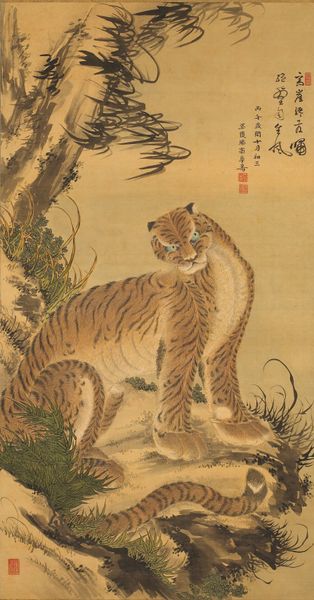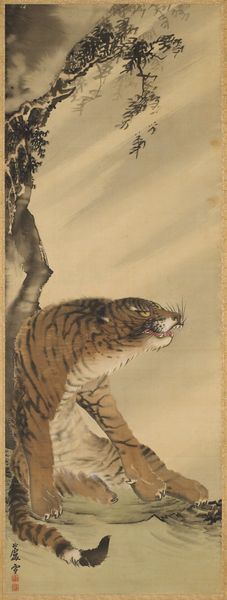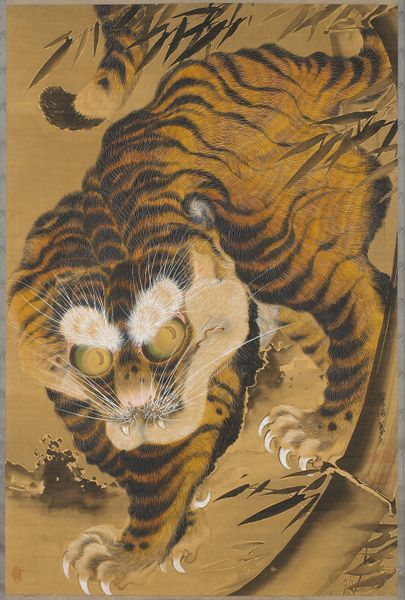
painting, hanging-scroll, ink
#
ink painting
#
animal
#
painting
#
asian-art
#
landscape
#
figuration
#
hanging-scroll
#
ink
#
realism
Dimensions: 44 3/4 x 19 3/4 in. (113.67 x 50.17 cm) (image)78 13/16 x 25 3/4 in. (200.18 x 65.41 cm) (overall, without roller)
Copyright: Public Domain
Curator: Initially, what strikes me about "Tiger by a Stream" is its composition. The tiger dominates the vertical scroll, yet the surrounding landscape elements offer balance, creating an intriguing tension. Editor: It’s interesting to consider this ink painting by Kawabata Gyokushō dating to the late 19th century through the lens of naturalism. A central question that emerges is whether this depiction reflects empirical observation of tigers in their native environment or adheres to artistic conventions? Curator: Indeed. Notice how the artist’s brushstrokes delineate the texture of the fur, offering a tangible sense of volume to the tiger's body. However, I also sense the presence of symbolist influence. Editor: Expand on that, I’m keen to hear about symbolic resonance in this context, and how they interplay with prevailing ideas of nature and human’s intervention within the landscape? How does the positioning of this work within artistic movements such as Realism play a role in the context and intention? Curator: Think of the carefully considered asymmetry; the off-center placement directs our sight-line downwards towards the flowing stream, which may stand for impermanence, thus giving this fearsome creature a touch of humility, maybe a philosophical pondering? Also the subtle rendering of mist suggests an interaction of nature and culture. Editor: The symbolism raises the question of the audience and intention. Japanese art was shifting under Western influences, reflecting an engagement with and departure from established symbolic traditions. A crucial line of enquiry revolves around how these transformations informed both artist creation and spectator's expectation in respect to political ideologies, national pride, and also identity during the Meiji period. Curator: Ultimately, it’s the careful interplay of contrasting artistic ideals that makes "Tiger by a Stream" so captivating and that leaves an impact. Editor: This prompts questions surrounding identity construction and re-evaluation in this historical and aesthetic dialogue, shaping the spectator's perception, isn't it?
Comments
No comments
Be the first to comment and join the conversation on the ultimate creative platform.
